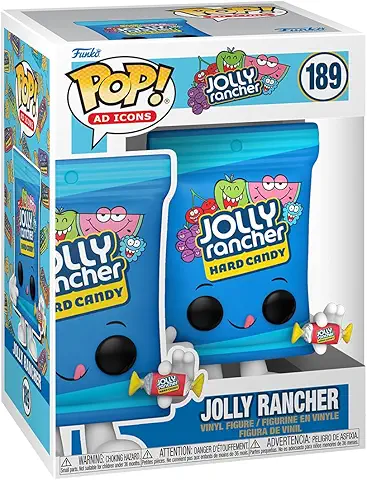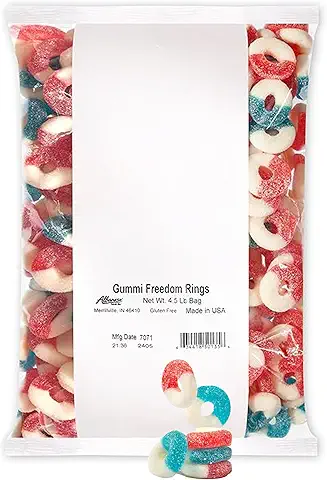Description
Introduction; Buy Bounty Chocolate
When it comes to a chocolate-bar with a tropical twist, few evoke that sensation quite like the Bounty bar. Introduced to the global market in 1951, this coconut-filled chocolate bar from Mars, Inc. has become a beloved snack in more than 90 countries.
In this in-depth article, we’ll explore the specifications of Bounty chocolate — from ingredients and nutritional facts to variations and packaging — and examine the benefits (and caveats) of enjoying this treat worldwide. Whether you’re a chocolate connoisseur, a consumer curious about ingredients, or simply looking to satisfy a sweet craving, you’ll find valuable insight here.
1. A brief history and global presence Buy Bounty Chocolate
The journey of Bounty began in the UK. According to its Wikipedia entry:
-
Bounty was introduced in 1951 by Mars, Inc. in the United Kingdom.
-
The name hints at the “taste of paradise” theme — the bar is frequently marketed with tropical visuals, beaches, palm trees, and coconut flavours.
-
Over the decades, Bounty expanded into numerous markets beyond the UK — Europe, Asia, Australia, Africa, and parts of the Americas.
The worldwide presence means that while the core format remains the same — coconut centre covered in chocolate — there can be regional differences in size, packaging, and even flavour variants (e.g., white chocolate or dark chocolate versions) depending on the country.
Its longevity and global footprint make Bounty not just a snack, but an icon of the coconut-chocolate combination.
2. What exactly is Buy Bounty Chocolate? Specifications & ingredients
2.1 Basic product description Buy Bounty Chocolate
At its core, Bounty is a sweet confection made of:
-
A filling of sweetened, desiccated coconut (often about 20-25% in some formulations).
-
Enrobed in milk chocolate (in its classic blue-wrapped variant). There are also dark chocolate (red wrapper) and white chocolate versions in some markets. Wikipedia+1
-
Packaged typically as two bars in a single wrapper, for sharing or individual consumption.
2.2 Ingredient breakdown (typical for milk-chocolate version) Buy Bounty Chocolate
One UK listing for the 57 g bar gives the following ingredients:
Sugar, Desiccated Coconut (21 %), Glucose Syrup, Cocoa Butter, Skim Milk Powder, Cocoa, Emulsifiers (Glyceryl , Mono Stearate, Soya Lecithin), Lactose, Milk Fat, Whey Powder, Glycerol, Salt, Vanilla.
Other sources provide slightly different percentages or ingredient order depending on country/size.
Key points:
-
The coconut filling is a major component (around 20% or so) in many markets.
-
The chocolate coating uses cocoa butter, milk solids (for the milk chocolate version), and often soy lecithin as an emulsifier.
-
This is not a dark-chocolate high-cacao bar; the milk-chocolate coating means higher sugar and milk content compared to pure dark chocolate.
2.3 Nutritional facts and serving size Buy Bounty Chocolate
Here are some typical figures for reference (may vary by market/size):
-
In one 45 g bar: ~240 calories, ~12 g fat, ~27 g sugar.
-
In another listing (57 g size): 270 calories per serving (57 g) with 117 calories from fat.
-
Ingredients list also show allergens such as milk, soya, lactose.
Important: Because of its high sugar and calorie load (typical of milk-chocolate confectionery), Bounty is best enjoyed as an occasional treat rather than a regular health food.
3. Variants and regional differences Buy Bounty Chocolate
While the classic milk-chocolate coconut bar is the staple, Bounty has a number of variants and adaptations:
-
Buy Bounty Chocolate coating variant (red wrapper) in many markets.
-
White chocolate version in selected countries.
-
Limited-edition flavours: e.g., mango or pineapple in some regions.
-
Format sizes (single bar, twin pack, mini versions) vary by market and seasonal offer.
-
Packaging may differ in terms of colours, language, and local ingredient adjustments to suit regional taste preferences and regulations.
All this means consumers worldwide can experience slightly different versions of “Bounty” depending on location — but the core promise (coconut + chocolate) remains consistent.
4. Why has Bounty remained popular worldwide? Buy Bounty Chocolate
-
Distinct flavour niche: The combination of coconut filling with chocolate coating sets it apart from many other chocolate bars that use caramel, wafer, nuts, or nougat. The “tropical” flavour is a memorable differentiator.
-
Global brand reach: Backed by Mars, Inc., which has robust manufacturing and distribution networks globally, Bounty has been accessible in many countries for decades.
-
Marketing & branding: Many of its campaigns emphasise a “taste of paradise”, bringing an aspirational or escapist quality to a simple snack.
-
Versatility: It works as a quick snack, part of a share pack, or a dessert treat. Variants and seasonal editions keep it fresh for consumers.
-
Affordability: As a mass-market chocolate bar, it is typically priced affordably in many markets, making it accessible to a broad consumer base.
These combined factors help explain the enduring global appeal of Bounty.
5. Potential benefits & nutritional considerations
5.1 Benefits — what the coconut + chocolate combination may offer
Although Bounty is primarily a sweet treat and not a health food, we can still highlight some of the beneficial components you’ll find in it:
-
Coconut component: Desiccated coconut contributes dietary fibre and some saturated fats (mostly medium-chain triglycerides in fresh coconut, though processing may alter this). Some literature suggests the fats in coconut may be metabolised differently compared to long-chain saturated fats, though this remains debated. For example: “Coconut is a nutritional powerhouse, rich in healthy fats, vitamins, and minerals.”
-
Cocoa component: The chocolate coating comes from cocoa, which has been studied for its antioxidant polyphenols and potential cardiovascular benefits. For example, cocoa flavanols may help with blood flow, lower blood pressure, improve cholesterol profiles and reduce inflammation.
-
Dark chocolate (higher cocoa content) offers more of these benefits; milk chocolate offers less due to dilution with milk, sugar and fat.
-
-
Mood & sensory enjoyment: Eating chocolate (and coconut) provides a pleasurable sensory experience which can boost mood, satisfaction, and possibly reduce cravings for sweets when consumed in moderation. The psychological benefit of satisfying a sweet craving in a controlled way is often overlooked.
5.2 What to keep in mind — moderation & context
While there are potential upsides, several factors temper the “benefit” narrative:
-
Sugar and calories: The nutritional facts show significant sugar content (e.g., ~27 g sugar in a 45 g bar) and substantial caloric load for a small snack.
-
Buy Bounty Chocolate vs dark chocolate: Many studies on cocoa benefits refer to dark chocolate or high-cocoa formulations, whereas Bounty is a milk-chocolate product with lower cocoa content. The beneficial effects of cocoa polyphenols are greater when the cocoa content is high and sugar/fat lower.
-
Fat content: The coconut filling and chocolate coating contribute saturated fat, which in large amounts may offset some health gains if diet is already high in saturated fat.
-
Not a substitute for whole-food nutrition: While cocoa has beneficial compounds, the overall form (a candy bar) should not be considered a functional food. Many of the positive studies focus on controlled doses of flavanol-rich cocoa, not routine candy bar consumption.
-
Allergens & dietary restrictions: Contains milk, soya lecithin, possibly lactose. Coconut is a tree-nut (depending on jurisdictions’ allergen definitions) and some people may need to avoid it.
A balanced approach is key: enjoy Bounty as an occasional indulgence, rather than daily routine, and pair it with an otherwise healthy diet.
6. Bounty in the global context – regional differences & consumption habits
6.1 Packaging and size variations
Depending on the market, you may find:
-
Single bar (e.g., ~57 g size as shown in UK/Europe).
-
Twin-pack bars (often two smaller bars in one wrapper) — this is common in some markets.
-
Mini or sharing bags (especially around holidays) with smaller versions of the bar.
-
Seasonal editions and branding (limited flavours, special wrappers).
These differences reflect both consumer preference and regulatory/marketing strategies in different countries.
6.2 Flavour variants by region
Some markets expand the flavour range to include:
-
White chocolate coating variant (selected markets).
-
Dark chocolate variant (red wrapper) in many countries.
-
Fruity limited editions (mango, pineapple) in particular countries.
Such variety supports consumer interest and local adaptation.
6.3 Cultural perception and consumption habits
-
In many countries, Bounty is seen as a shareable snack or a “treat” rather than an everyday bar.
-
Marketing often emphasises tropical escapes — the idea of coconut, sun, and beach gives the product an aspirational dimension.
-
In some places, coconut-flavoured chocolate bars (including Bounty) are associated with holidays, gifting or indulgent breaks rather than regular consumption.
-
Because of global distribution, some markets may price it differently; availability may vary, and local ingredient sourcing or manufacturing might differ.
Thus, the way Bounty is consumed globally varies, but its “escape through flavour” positioning remains consistent.
7. How to enjoy Bounty — tips for purchase and consumption
Here are some practical tips when buying or enjoying Bounty chocolate:
-
Check the size and wrapper: Depending on your market, the weight may vary (45 g vs 57 g vs mini bars).
-
Compare sugar/fat content if health-tracking: If you’re monitoring sugar or calories, note the numbers (~240–270 kcal for typical bar).
-
Look for freshness and storage: As with any chocolate bar, store in a cool dry place (avoid high heat) to maintain texture and prevent melting or blooming.
-
Share or portion control: Since the bar is calorie-dense, consider sharing, or breaking into smaller pieces rather than eating the whole bar in one go.
-
Pair it smartly: Enjoying a bar after a meal rather than as a standalone snack may help you limit other sugary food later.
-
Be mindful of dietary needs: Contains milk, soya; coconut allergy is rare but exists. If you’re lactose intolerant or avoiding milk solids, be cautious.
-
Try variants: If your market offers dark or white chocolate versions, these offer a different flavour profile (and in dark version, possibly slightly higher cocoa content though still a candy bar).
By approaching Bounty consciously, you can enjoy its flavour while keeping your overall nutrition goals in balance.
8. The benefits in summary & final thoughts
8.1 Benefits recap
-
Offers a unique flavour combination of coconut and chocolate that stands out among chocolate bars.
-
Contains cocoa-derived compounds (though in moderate amounts) which may support cardiovascular and mood benefits, particularly if consumed in moderation
-
The coconut filling provides a texture and flavour that differentiates it and adds to the indulgence factor.
-
Worldwide availability and flavor variants allow consumers to pick based on preference and regional variant.
8.2 Things to be mindful of
-
It is still a candy bar: high sugar, calories, and saturated fats.
-
The beneficial cocoa compounds are more significant in high-cocoa dark chocolate; Bounty’s milk-chocolate format lessens those effects.
-
Should be consumed as a treat, not a health food.
8.3 Final verdict
In the landscape of chocolate bars, Bounty offers something distinct — the tropical flavour of coconut paired with chocolate, wrapped in a globally recognised brand. For many, it’s a nostalgic treat, a flavour break, a mini-escape. From a nutrition standpoint, while you can acknowledge the cocoa and coconut components as having potential modest benefits, it remains a high-indulgence product best enjoyed occasionally and within a balanced diet.
If you like coconut and chocolate together and want a globally available snack choice, Bounty is a strong contender.
9. Frequently Asked Questions (FAQs)
Q1: Is Bounty gluten-free?
It depends on the country’s version. The ingredients list in the UK doesn’t list wheat/gluten explicitly, but cross-contact cannot be ruled out. Always check the packaging for “may contain” statements and local manufacturing details.
Q2: Is there a vegan version of Bounty?
Not widely available. The classic version uses milk solids and butterfat. Some markets may have alternative coconut bars, but these wouldn’t be the standard Bounty with the same brand packaging.
Q3: What makes Bounty different from similar bars (e.g., coconut & chocolate bars)?
Bounty’s long heritage (since 1951) gives it brand recognition. Its core format (desiccated coconut filling + milk chocolate coating + twin bar format) is distinctive. Marketing emphasises the “taste of paradise” angle.
Q4: Can eating Bounty help my heart health?
While chocolate and cocoa can support cardiovascular health when high in cocoa and consumed modestly, the standard Bounty bar is not designed for health benefits. Its sugar, fat and milk content mean the benefits are modest. If cardiovascular health is your goal, high-cocoa dark chocolate (70%+), minimal sugar, in controlled portions, is a more evidence-backed route.
Q5: How many calories are in a Bounty bar?
A typical 45 g bar is around ~240 kcal. A 57 g bar listing showed ~270 kcal. Always check the local packaging for precise numbers.
Conclusion
Buy Bounty Chocolate, If you’re seeking a chocolate bar that delivers something a little different from traditional wafer, nut or caramel-filled bars, Bounty is a solid choice — tropical coconut, smooth milk chocolate, and global availability. From a flavour standpoint, it hits the niche well. From a nutrition standpoint, enjoy it with awareness: delicious indulgence, yes; health food, not quite.
Whether you savour a bar on holiday, share it with friends, or simply keep one in your snack drawer, Bounty remains a globally recognisable treat with a distinctive flavor heritage. And now you know the story, specifications and benefits behind it.






Reviews
There are no reviews yet.